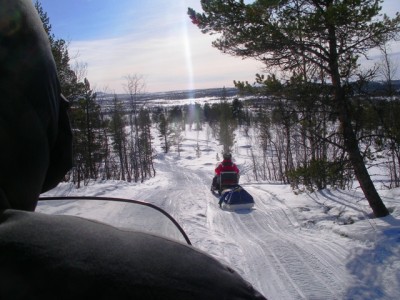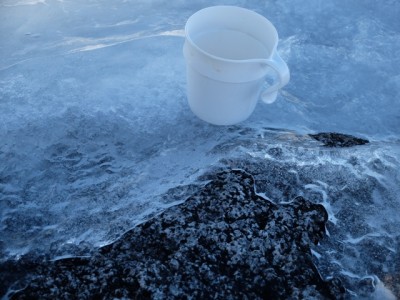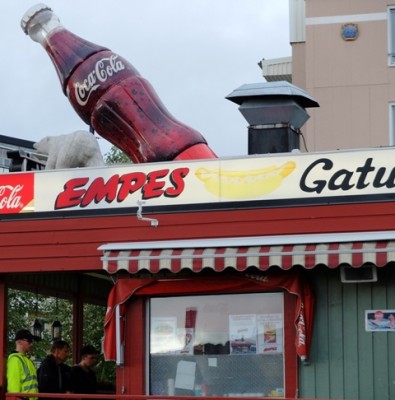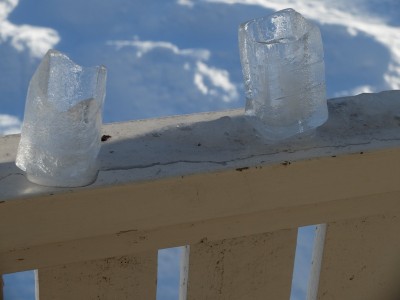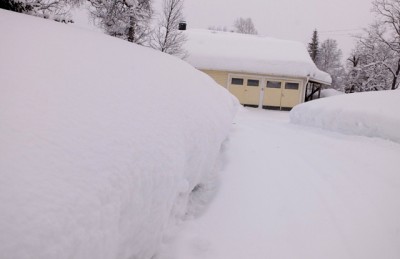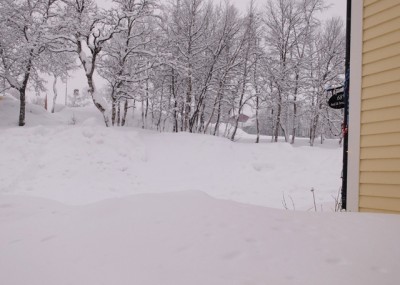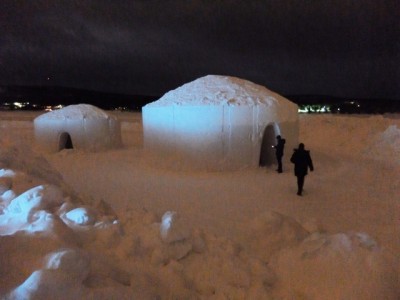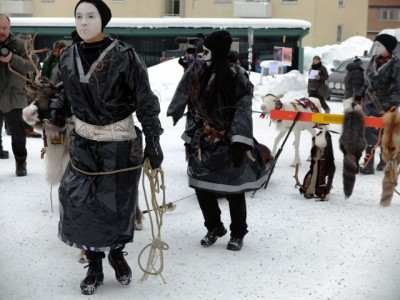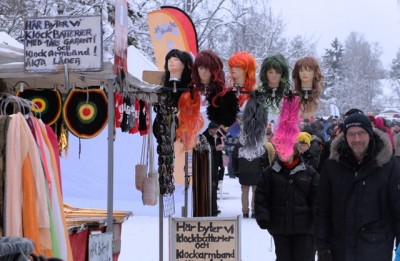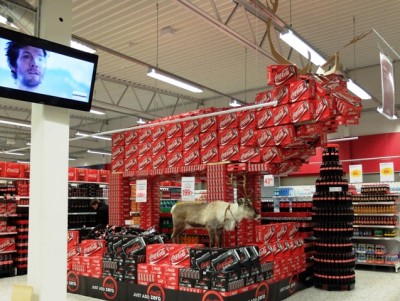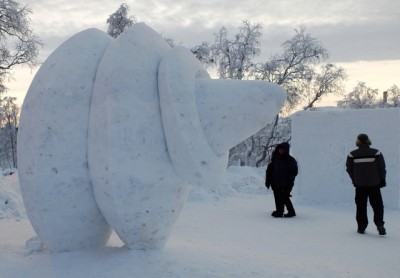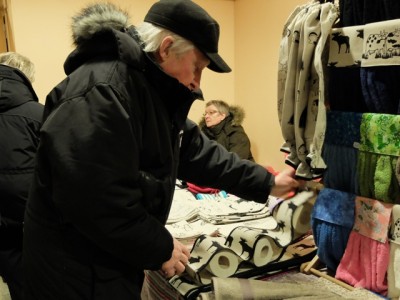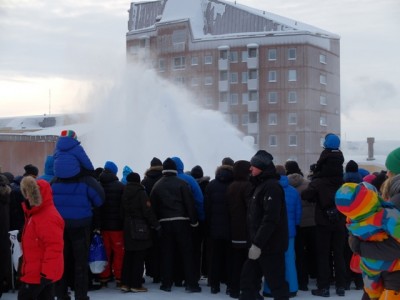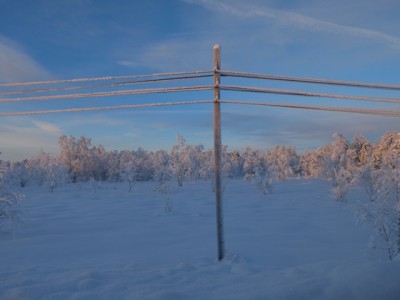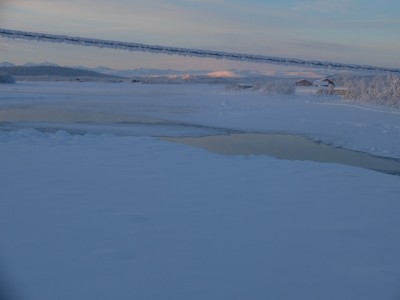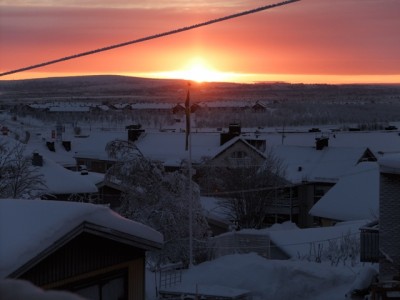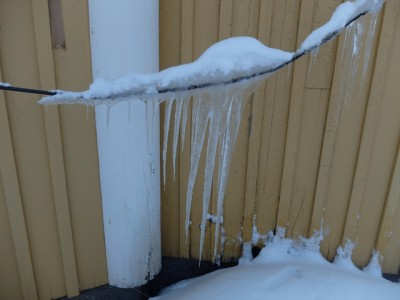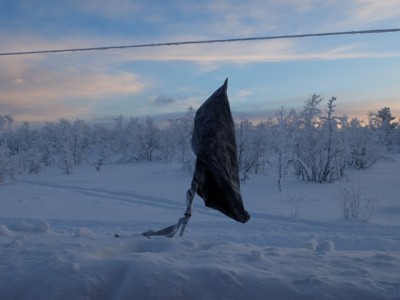We found a book in the local second hand shop – written in 1965 for Swedish tourists coming north for the first time. The book told them about the people and the landscape, what they might find, what kind of things were here for tourists, generally what to expect. There are some similarities to the present day – the book enthuses about the opportunities to explore the mountain areas, learn about Sami culture, see a diversity of natural species, experience ‘the big silence’.
There are noticeable differences though. It’s a photo book so there are lots of pictures of the mountains, the summer light, the lakes, and reindeer. But there was less beating around the bush in 1965. There are some graphic photos of Sami biting off the testicles of reindeer. I’m not sure why they thought this would encourage more tourism. It should have had a warning underneath, ‘don’t try this yourself at home’.
In the 1960s the midnight sun was the big draw for Swedes, and the northern lights were barely mentioned. Swedes have always been sun worshippers, so this isn’t surprising, and a summer holiday was more common. There’s even a chapter on sea and lake bathing, an essential part of any holiday. They were a hardy lot in 1965.
Summer was the holiday season, but the book does try to sell the winter darkness too. Alongside descriptions of how apathetic and depressed people can become in the darkness (a myth, in my view – something experienced more commonly further south where there is less darkness), and how over-active and excitable people can become in the summer in constant daylight (more true), it makes the case for the beauty of the winter landscape, and the welcoming atmosphere, when people in the north ‘come down a few revs’ and ‘enjoy some peace and quiet’.
The image of people as functioning on ‘revs’, like a car’s rpm, was right for the times. It was the time for the car – still a modern luxury, desired but not owned by all and (at least in this part of the world) without any known downside. The only downside up here was the lack of roads. At that time you could only go as far as Kiruna by car – after that into the fjäll and towards Norway you’d have to take the train. There’d been talk of building a road connecting this part of Sweden with the Norwegian coast since the 1940s. The second world war had halted any progress then, but after it ended the talking continued but no clear road plan emerged.
There were discussions about where the road might go. In the early days as later on there would have been voices for and against. For many it was the easier connections to the world beyond that they desired, while others saw the destruction of the landscape. The road would have to go the Norwegian border on one side of the big lake, Torneträsk – either next to the railway track, or on the other side. On both sides there were some small settlements. By the railway track were some Sami settlements, and places that had grown up around early tourism, Abisko for instance. On the other side were a few small villages, mainly but not exclusively Sami. On that side of the lake access to the villages was at that time only by boat in the summer, or skiing or walking over the ice in winter, and no chance of either during the in-between months.
Both sides of the lake hoped the road would come their way but it was the villages on the far side of the lake that were keenest, not having the railway line nearby. These villages decided to be in a state of readiness for the new road, so in 1962 started by building their own road, called Talmavägen, between the villages.
Perhaps they thought this way they would influence the final decision about the main road. If so, they were to be very disappointed. The road to Norway was finally built in the early 1980s, and it went the railway side of the lake, leaving the five small villages on the other side as isolated as ever, only now with a road between them, a road leading only to dead ends.
So the villages still have this road, connecting Salmi with the village of Laimo, at least in the summer months when it isn’t full of snow. There are cars there, brought over the ice and driven on the road until the cars die, when they are left to blend in with the landscape. Driving over the lake isn’t something you’d want to try most days of the winter, and no days of the summer, so the cars there can only be driven 30 kms and then turn round and go back. No MOT tests outside January to March then.
This week the local paper in Kiruna carried an announcement that the association of people who own the road would be having their annual general meeting. You wonder what they have to discuss, or vote on. On the other hand, a pot hole is a big deal in such a short road.
